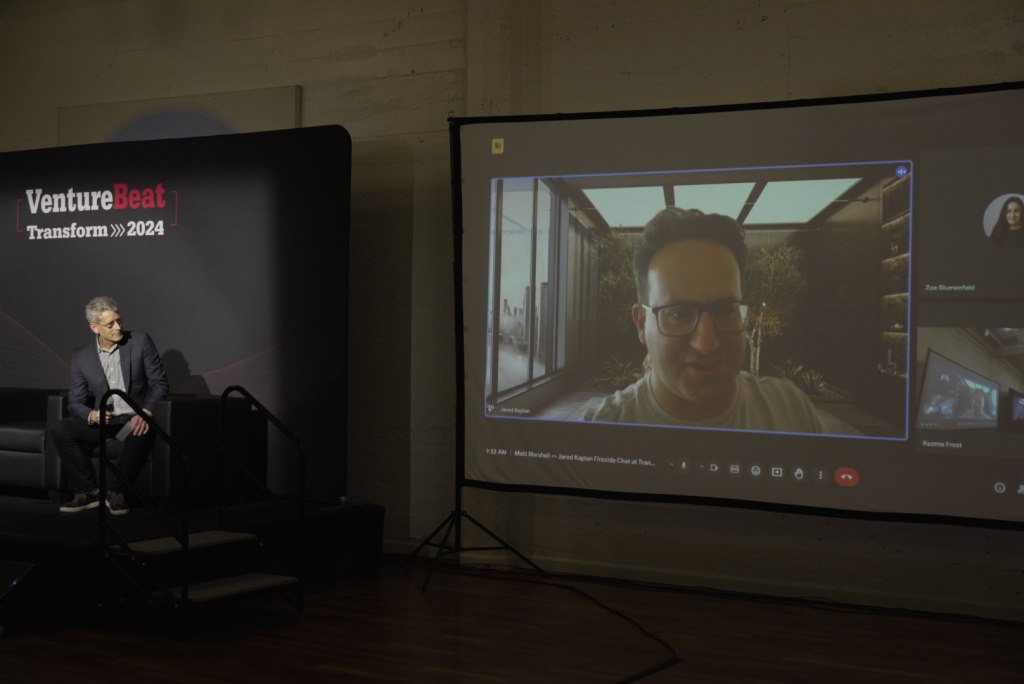
Jared Kaplan, Anthropic‘s Chief Science Officer and co-founder, didn’t mince words at VentureBeat’s Transform 2024 conference. His message? Generative AI technology is set to become as commonplace as smartphones, reshaping how we work, play, and interact with technology enabling on-demand bespoke software.
“If we’re right about the rate at which AI systems are going to improve, then AI is going to be integrated everywhere,” Kaplan asserted. This isn’t just crystal ball gazing – Anthropic is already paving the way with innovations like Artifacts, a feature that hints at a future where AI doesn’t just answer questions but actively collaborates in building tools and content.
Anthropic’s approach stands out in the AI gold rush. While some tech giants seem locked in a horsepower race, Kaplan emphasized Anthropic’s unwavering focus on responsible development. “We’re at the forefront of interpretability,” he noted, referencing the company’s work on constitutional AI. With Generative AI technology you not just about creating powerful AI, but making it reliable enough for real-world, large-scale deployment.
Register to access VB Transform On-Demand
In-person passes for VB Transform 2024 are now sold out! Don’t miss out register now for exclusive on-demand access available after the conference.
AI as a creative partner: From chatbots to software architects
Kaplan painted a picture of a future where AI doesn’t just use pre-built software but crafts bespoke software on demand. “AI can build the software you need for a given situation in collaboration with you,” he explained. This vision aligns with Anthropic’s recent push into enhanced collaboration features, aiming to transform how teams leverage AI in enterprise settings.
However, Kaplan isn’t naive about the challenges ahead, particularly regarding AI agents. “People aren’t ready yet, in many cases, to entrust LLMs with high-risk or high-value use cases autonomously,” he acknowledged. The key, according to Kaplan, lies in boosting both capabilities and safety measures.
Anthropic isn’t just theorizing about these improvements. Kaplan highlighted the strides made with Claude 3.5 Sonnet, which he claims is “two or three times more accurate compared to Claude 3 Opus and prior models on agentic coding tasks.” This leap in performance could be a game-changer for software development, with AI agents capable of navigating complex codebases, making multiple changes, and even running tests to verify their work.
Balancing innovation and trust: Anthropic’s approach to AI agents
But with great power comes great responsibility, and Kaplan stressed the critical role of thorough evaluation in AI deployment. Anthropic employs a battery of internal and industry-standard tests to assess everything from factual accuracy to the ability to interpret varied data types.
Kaplan’s discussion took an intriguing turn when he delved into Anthropic’s approach to evaluating multi-turn conversations and complex, multi-tool interactions. These assessments push the boundaries of what we expect from AI, measuring its ability to use the right tools from a vast arsenal and perform tasks requiring multiple sequential actions.
Looking ahead, Kaplan expressed enthusiasm about making these sophisticated evaluation techniques more accessible to customers. This move could demystify AI capabilities for businesses, enabling more informed decisions about adoption and implementation.
Kaplan’s insights offer a roadmap for thoughtful integration and development. Anthropic’s vision isn’t just about creating smarter AI; it’s about fostering AI systems that can truly collaborate with humans, from coding to creative tasks.
For those navigating the AI revolution, the takeaway is clear: the future isn’t just about raw computing power. It’s about creating AI that can seamlessly integrate into our lives and work, enhancing rather than replacing human capabilities. As Anthropic pushes these boundaries, they remain steadfast in their commitment to safety and reliability.
Author: Bryson Masse
Source: Venturebeat
Reviewed By: Editorial Team



